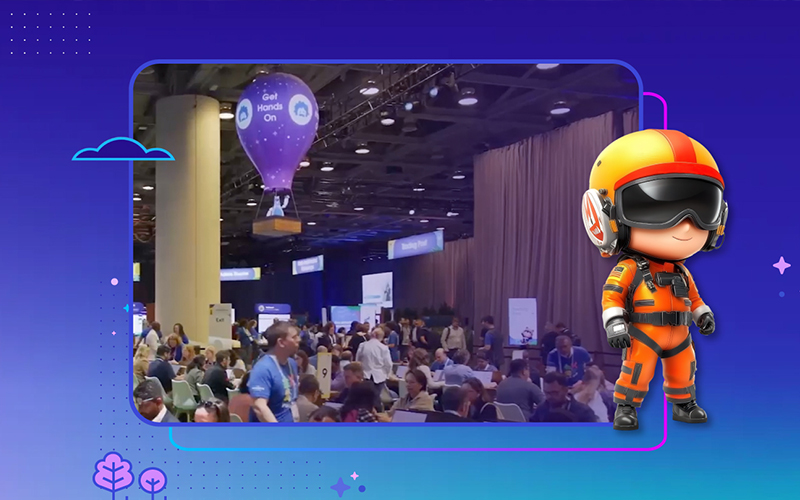
This post is part of our “Get Onboard with the AppExchange” series, showing first-timers the ropes. Here are entries to date:
Part 1: Choose Your Path
Part 2: Utilize Your PAM
Part 3: Introducing Your Partner Success Manager
Part 4: Interfacing with your Technical Evangelist
Bonus Track: Sales Engineers
In the previous blogs, the discussion revolved around the various roles you’ll be interfacing with as you go through the AppExchange onboarding process — the process to becoming a Partner. I’m intentionally skipping the Security Review team because the process is highly unique and you won’t be interfacing with a specific role during this process. But fear not! Here is a great Trailhead Trail on How to Prepare for Security Review and we have a Security Review package available if you need a hand.
This blog will involve an optional role available to you following your successful completion of the AppExchange security review – Partner Premier Support. We continue our conversation with (now former) Senior Manager of ISV & OEM Alliances Ryan Gibney.
Ron: Aside from the Partner community, what other resource has Salesforce provided Partners once they’re listed on the AppExchange?
Ryan: There’s something called Partner Premier Support (PPS). It’s really around case resolution, and then also helping to rectify development issues. The best place to get an overview would be to go to the Partner Premier Support segment on the Partner community — which is not just developer support, it’s also go-to-market support as far as case resolution. If you just want development support, it’s basically case packs where you can ask a Salesforce developer for advice on coding issues that you may have.
This developer support is along the lines of “I’ve built an application and I’m having these issues. Or, I can basically put together the whole application, but there are these outstanding question that I don’t quite understand.”
There’s a whole segment in the Partner community dedicated to partner success as far as when you get into market. If you get to a certain point with your partnership, we have Partner Success Managers that help guide you and provide a lot of support to run your business — in addition to the information your PAM is providing.
Ron: I will still be working with my PAM, so then this means that the Partner Success Manager is primarily a guide in whatever it is that I’m looking into in the Partner Community?
Ryan: Correct. You don’t ever lose your PAM. The PSM is a service that we provide for some of our more established partners.
Ron: Does this mean that smaller applications, or smaller-sized partners are less likely to need a PSM or does it make a difference in terms of how big you are and how big your market is in the AppExchange?
Ryan: That’s a hard question to answer. I would say that I think all partners could benefit from having that type of resource available to them. But if you’re an extremely small shop, then the recommendations and resources that a PSM would give you are probably not something that you can execute on — at least not at this point.
So I think the best way to grow with the community is to get into market, understand what your value proposition is, leverage some of the resources that are available to you (maybe from a self-service perspective), refine your pitch and your value props, understand what your total addressable market is, work with your PAM to understand how that would be communicated within Salesforce, and then go from there. Also, understand how turnkey is your solution. How much implementation overhead do you need once you provision your licenses? That needs to be taken into account when you think about scaling and executing your go-to-market perspective.
Ron: Then it essentially depends on where you are in your growth and development on the AppExchange as to whether the PSM is something you should consider reaching out to since their suggestions may not even be applicable to you at your current stage of growth.
Ryan: That is actually the case. Don’t think of the PSM as a service that is available to all partners, rather to partners once they get to a certain level. This is because the PSM will be working with you to understand your value proposition and help you position your application. If you’re a small company with all this pipeline then you won’t be able to fully execute on the recommendations of the PSM.
Ron: Therefore, the expected behavior for Partners would be to leverage their PAM as a resource. And their PAM would be the best guide to determine if a PSM is an available resource or not?
Ryan: Yes. The PSM doesn’t happen as a resource for Partners for a couple years — at least for the vast majority of partners. There are a lot of resources available to you from a self-service perspective that can really help you drive your application, drive adoption, and different sizes of packages in something called AMP — the AppExchange Marketing Program. This is how we co-market with our Partners, and it’s a paid service, but small and large applications alike participate. That program really just depends on your needs and your budget.
In closing, we’ve spent the past few blogs reviewing a variety of resources Salesforce has provided their Partners during the onboarding process, and resources that extend the life of the relationship with Salesforce. The central theme that Salesforce seeks to convey to partners is that Salesforce is committed to the success of the Partner, and to the overall Salesforce community, by maintaining a vibrant and strong AppExchange. Perhaps your experience on the AppExchange will never involve some of these resources — that doesn’t mean your success is limited. There is a wealth of resources and people available to provide you with as much help and guidance needed, guiding you to success on the Salesforce AppExchange. If you need guidance on navigating the ecosystem or your build, feel free to let our team know and you’ll have help on the way!


